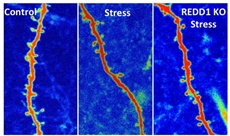New insight into neurodegenerative disease trigger
05 Mar 2014
Scientists at the University of Liverpool and the University of Nagoya, Japan, have found that the stability of a particular protein in the body could influence the onset of neurodegenerative disease.
 | |
| The study opens avenues for further research including development of drugs that decrease TDP-43 stability and accelerate its degradation to prevent accumulation in cells |
Mutations to a DNA binding protein, called TDP-43, are linked with motor neurone disease and a number of other of neurodegenearative diseases, including Alzheimer's and Guam-Parkinson's Dementia.
Accumulation of protein
TDP-43 binds to large molecules, called ribonucleic acid (RNA), which is at the heart of the process that allows DNA to be read and used for the manufacture of proteins. Scientists have now shown that mutations in TDP-43 can occur that leads to the protein breaking down at a slower rate than normal, resulting in an accumulation of the protein in the cells.
It is not known why these mutations occur, but it is thought that this process can influence the age at which motor neurone disease patients first show symptoms of the disease.
The slower rate of degradation means that TDP-43 accumulates in the cells and could ultimately lead to neurone death by changing the delicate metabolism of these fragile cells, triggering the onset of disease.
Biochemist, Dr Gareth Wright, at University's Molecular Biophysics group in Institute of Integrative Biology, says, ''These changes to TDP-43 are unusual because most proteins involved in neurodegeneration are unstable. This is the case in Alzheimer's, Parkinson's and Huntington's diseases and motor neurone disease, which results from mutations in another protein, called superoxide dismutase.''
The findings open avenues for further research including development of drugs that decrease TDP-43 stability and accelerate its degradation to prevent accumulation in cells.
Dr James Austin, who completed his PhD on the research, says, ''The fact that TDP-43 is associated with many neurodegenerative diseases warranted investigation. We were able to discover the protein's structure, half-life, aggregation propensity and stability.
''We identified that TDP-43's cellular longevity is due to higher thermal stability and resistance to unfolding.''
The study, published in the journal of the Proceedings of the National Academy of Science, is supported by the Motor Neurone Disease (MND) Association, as well as Professor Samar Hasnain and Dr Svetlana Antonyuk from the University's Institute of Integrative Biology.













.jpg)






.jpg)









